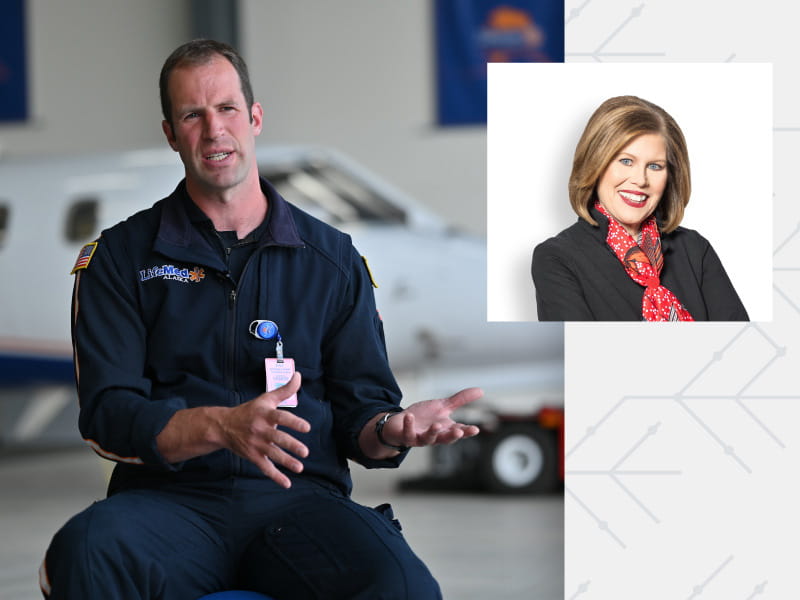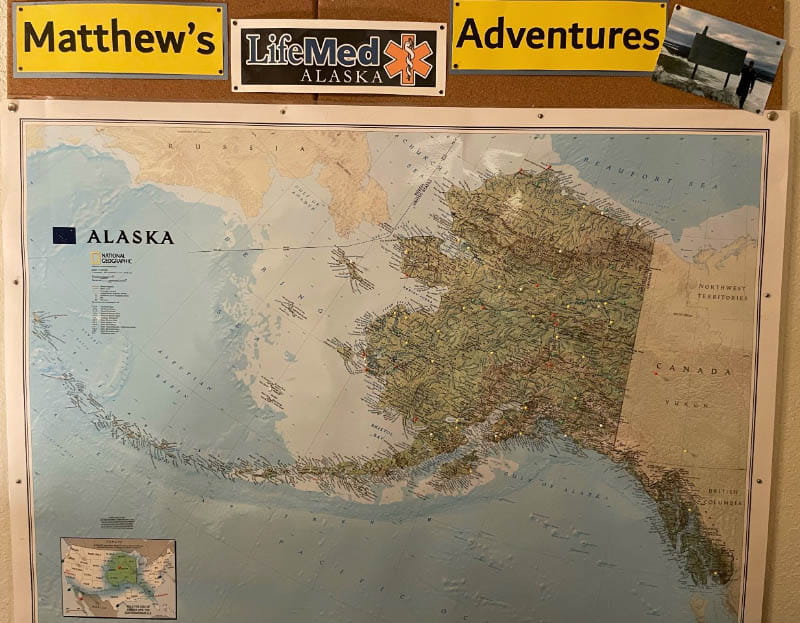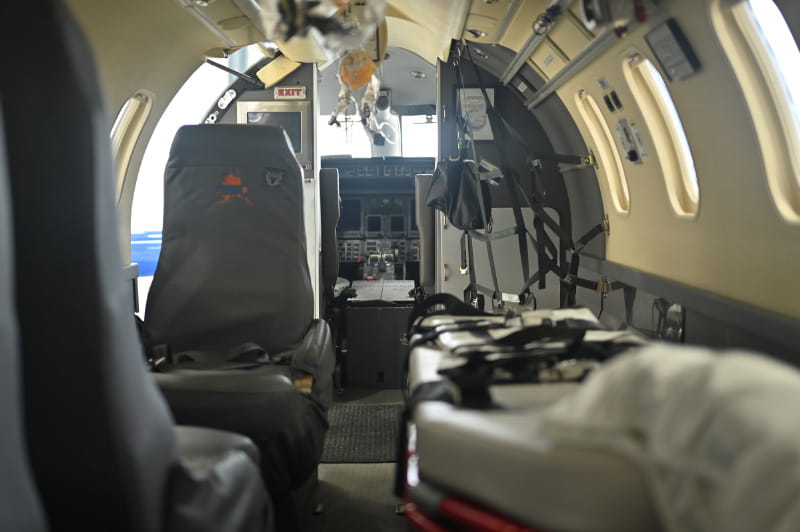Meet Matthew, the medevac: He flies 350 mph in the cold, dark of winter to help fellow Alaskans
By Nancy Brown, American Heart Association CEO

About 1 in 5 Americans live in rural areas. Far too many of those 66 million-plus people lack access to quality health care.
Research conducted before the COVID-19 pandemic shows the life expectancy of rural Americans overall is about 2.5 years less on average than for people in urban settings – and rural residents are more likely to die from heart disease and stroke.
There are plenty of reasons for these disparities.
Getting care can require covering a lot of miles, which of course can take a lot of time – which, in an emergency, is precious time. And that's in good weather. Shortages of health care professionals further complicate things. The expanse of miles also brings challenges of getting people enough food, much less healthy food.
There are more issues, but not just a single fix. However, there is a tremendous reason for hope: the people in rural America. They're resilient, tough and independent. They take care of their neighbors. And people there are hard at work making things better.
My organization shares their desire to improve rural health.
The American Heart Association, in 2020, released a presidential advisory on rural health titled "Call to Action." Then came a 2024 Impact Goal aimed at improving health equity for all, with a sharp focus on rural Americans. In 2022, we launched a three-year initiative to help rural hospitals and clinicians provide high-quality, consistent, timely and appropriate evidence-based care. Last summer, we announced a $20 million investment into scientific research of health challenges in rural areas.
For a closer look at it all, we sent reporters, photographers and videographers to five largely rural states. The series of stories – available on heart.org and YouTube – examine various aspects unique to each locale.
Here's the story of one of the countless people across rural America who've devoted their lives to helping their friends and neighbors.
***
FAIRBANKS, Alaska – Above the dresser at his home, Matthew Kuhns maintains a large, detailed map of his home state.
It's dotted with about 50 pins that are topped by colored balls. Each marks a runway he's flown into as a critical care nurse for LifeMed Alaska, an air ambulance service.
"I've gone to some pretty far-flung locations," he said, smiling wide.
Matthew is always eager to add pins. He's also hoping to see his first polar bear.
Craving adventure is the way he's wired. And, he's quick to note, so are his colleagues in the medevac (short for "medical evacuation") community.
"We are all adrenaline junkies," he said. "We never want a bad situation, but those are the ones that challenge us as critical care providers. We like to be able to use those skills."

As the son and grandson of firefighter-paramedics who spent time working in Fairbanks, Matthew grew up around this unique profession. His senior year of high school, he told his dad he wanted to do it, too.
Dad suggested a subtle shift. If Matthew wanted to work in the medical field, he should study nursing. It would provide more options later in life.
So off Matthew went to Bushnell University in Eugene, Oregon, where he earned a degree in … psychology.
"I was going to be a counselor," he said.
Matthew realized he wasn't suited for it, though. So he took his dad's advice. He went to the University of Pennsylvania for a degree in nursing, then got hired by a regional trauma center in Springfield, Oregon. He married a local and they started a family. After six years of working in an intensive care unit, he decided it was time for something else. Something he'd wanted to do since at least 12th grade.
"When I got into nursing, in the back of my mind, I knew I wanted to be a flight paramedic like my dad," Matthew said. "Once I had enough experience, LifeMed was kind of my ticket back home."
He pitched the idea to his wife as a five-year experiment. That was nine years ago.
Back in Fairbanks – which has 33,000 residents, making it the second-largest city in Alaska, behind only Anchorage – Matthew works with many people he knew growing up. Some worked with his dad. That underscores how the medevac world draws in certain people and retains their devotion.
Think of it this way: Once someone experiences delivering medical care to fellow Alaskans while flying 350 miles per hour past some of Earth's most phenomenal locations, they want to keep experiencing it.
"We love what we do," he said.
Furthering the point, he smiled wide and added, "We had a competition (in 2021) of who went on the coldest flight. A couple of different teams did negative-54."

In the chain of survival, medevacs are like land-bound paramedics in that they serve as a bridge to a higher level of care. However, there's more to it in Alaska, a state so big that if cut in half, each section still would be larger than Texas, the next-largest state.
Because of the sprawl, patients can often be hours from the specialized treatment they need – yet could die if they don't get that treatment within minutes.
This is why medevacs must have years of experience in emergency medicine before ever getting into an airplane or helicopter. It's why they go through a probationary period, then continue training throughout their careers, learning what Matthew calls "things that hopefully I'll never have to do."
Still, circumstances can force them to perform duties beyond their skill set. They'll do so under the direction of a specialist connected via video, cellphone or satellite phone.
"I don't see myself as the expert," Matthew said. "I see myself as part of an expert team."
When his office gets a call for help, the crew (typically, a critical care nurse and a critical care paramedic) gets ready while the pilot (or pilots) determine whether the trip is safe. Pilots are intentionally given no information except the destination.
Why? Because if they knew the trip was for something like saving a child, they may downplay weather risks.
There's been only one crash in his company's 16-year history. Everyone survived. However, the company's precursor lost three people in a crash. That's why there are three stars painted near the door of all the company's aircraft.
"We don't want to put ourselves in a situation where we have to get rescued," he said.
One of his most memorable calls was one of his first. It was to, of all things, a plane crash.
The site was way up north in Anaktuvuk Pass, among mountains so treacherous that they trigger the plane's automated terrain warnings even under calm conditions. The reason for their trip made it clear this wasn't a calm day.

Many medevac planes headed out. Matthew's arrived first. The weather worsened quickly, preventing the others from landing. All the caregiving fell on him – someone who at that point was accustomed to the resources of a regional trauma center – and his partner.
"We got to the clinic and my eyes are wide," he said. "I have never had to take care of this many patients before. But my partner was calm. He tells me, 'Hey, this is how we're going to handle this.'"
Having learned that lesson, Matthew has applied it many times. Like when he flew to the town of Hughes (population 85) in the dead of winter, needing to reach a man having a heart attack.
Gear and people were loaded onto dog sleds for a three-quarter-mile trek in dark and snow. Once they hooked up the patient to monitors and started some fluid lines, they fit him and the equipment into a specially made down sleeping bag to keep things warm (and the lines from freezing). Then everything and everyone loaded back onto dog sleds and got dragged back through the dark and snow to the aircraft.
"Those are fun challenges," Matthew said.

Medevac flights are for more than emergencies.
They can be used to transport someone to a doctor's appointment. Or to provide education and awareness classes to a remote community.
Sometimes they're for palliative care.
Those trips involve patients who know they're out of options for treatment. Rather than face the end of life in a Fairbanks hospital, they ask to fly home to spend their remaining days surrounded by loved ones.
The plane's arrival is greeted by pretty much the entire community. Many residents thank the medevacs for making this homecoming possible. The crew's work doesn't end at the landing strip, though.
They deliver the patient to their home. All the way to their bed.
"We can tuck them in and say, 'Life is precious, and your life is precious. I'm so glad that your family is here. I'm so glad that I can help bring you here,'" Matthew said.
The job of a medevac clearly requires many special traits.
It's a balance of strength and stamina, education and emotions, with someone else's life at risk and, perhaps, their own – often while zooming 350 miles per hour across long distances in the dark amid sub-zero temperatures.
So, as a father of four boys, ages 7 to 14, does Matthew encourage them to follow his career path? Or should they take Grandpa's advice and learn nursing, or perhaps something else?
"I know one is interested in being a pilot, another a police officer, and the other two have yet to decide," he said. "I'm happily open to any good career jobs for them."
A version of this story appeared on Thrive Global.





